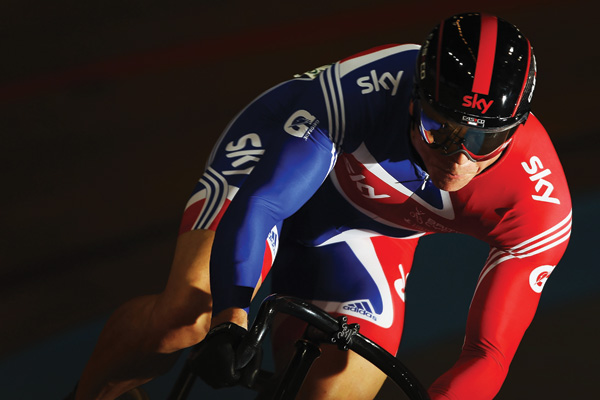Train like a pro cyclist
Shane Sutton, the head coach behind Team Sky, says the lessons he has delivered to the pros can be applied to your training

This year has been an unbelievable one for British cycling but 12 months ago we realised everything had to change. It was the way we performed at the European Track Championships in Apeldoorn in 2011 that made us realise our level of performance wasn’t acceptable from a coaching point of view. We had to give the athletes more. That was key.
Fast forward to this summer. Standing with Chris Hoy’s coaches in the London velodrome as he won the keirin will be one of the enduring memories of my career. Only Chris could do what he did – from being almost beaten at the bell to clawing back victory. The roof came off the place, and the goosebumps and tears that followed were something I’ve never experienced before. Yet those lessons we delivered to Chris Hoy, Bradley Wiggins and the others for the track and road are just as important for amateur riders.
Identify your targets
First, look at the task in hand. What is it you’re trying to achieve? It could be that you ride to work in 30 minutes and you want to cut it down to 25 minutes. There is a training programme you can put into place to make that happen. Once you can identify your goal, you can work on finding the solution.
Find out what it takes
Bradley Wiggins’s goal was winning the Tour de France. I started working with him properly in 2010 – a poor year for him – and when he came over to Team Sky we realised he wasn’t receiving good coaching.
We looked in greater detail at what was required to win the Tour. We looked at the demands of the events. We knew it would take going into the red at altitude and training at his maximum heart rate. If you don’t train for those scenarios, you’re never going to be able to cope with them in the real thing.
Be your own coach
Monitor your progress. At 55, I still keep a training diary and log how much I’ve accomplished every day. It keeps you on track, especially if you don’t have a coach. As you get better, your boundaries and goals change and that’s why it never becomes easy.
Get comfortable
If you want to run a marathon, every ex-marathon runner or coach will tell you to spend as much time in the shoes as possible. It’s the same for any discipline. Spend as much time as you can on your bike. You’ll become more comfortable and start to adapt. You will become quicker.
Keep it simple, don’t rush
After the success of Beijing, I think Chris Hoy found it difficult. He was recognised everywhere and distractions started to take over his life. There was so much going on that he was rushing into training five minutes before we were due to start, so he wasn’t mentally ready. He was rushed and if you rush anything in life, you miss the detail. We needed to slow him down and get his focus back.
Reward yourself
Although our training programme is based mainly on carrot and no stick, there are times when you need to give someone a kick up the backside, even the greats like Chris and Bradley.
The 2012 Gillette ‘Great Starts’ campaign celebrates community coaches and inspires the next generation of coaches by providing them with grants to fund their next level qualifications.
For more expert training advice, subscribe to MF - we'll give you five issues for £5.
Download a digital version of the latest issue from iTunes.
Sutton's golden rules
1. Identify your goal
If you’re not sure what you’re trying to achieve, your training can’t possibly be successful. ‘Improve’ is not good enough. ‘Improve so that I can cycle 30km in an hour’ is more like it.
2. Track your progress
Diaries aren’t just for teenagers. You need a constantly updated record of your development to stay motivated and spot which aspects of your training need more work.
3. Keep it simple
At the start of each training session, always have a clear idea of what you’re going to do. Stay calm and focused, stick to the plan and you should see solid results.
Get the Coach Newsletter
Sign up for workout ideas, training advice, reviews of the latest gear and more.
